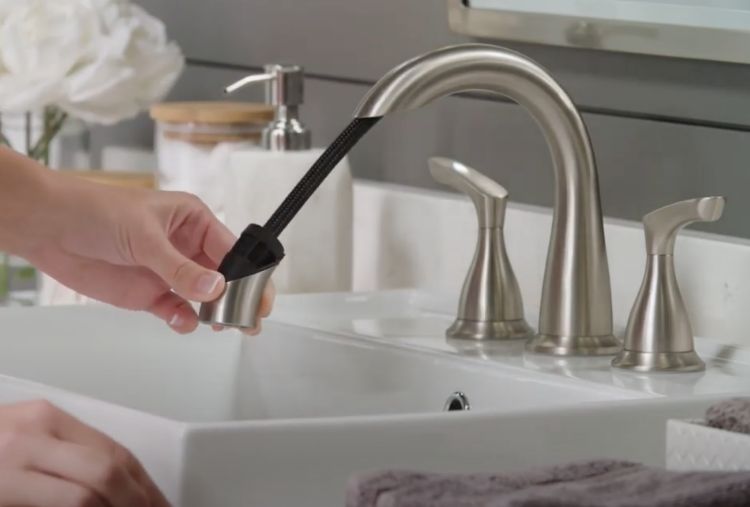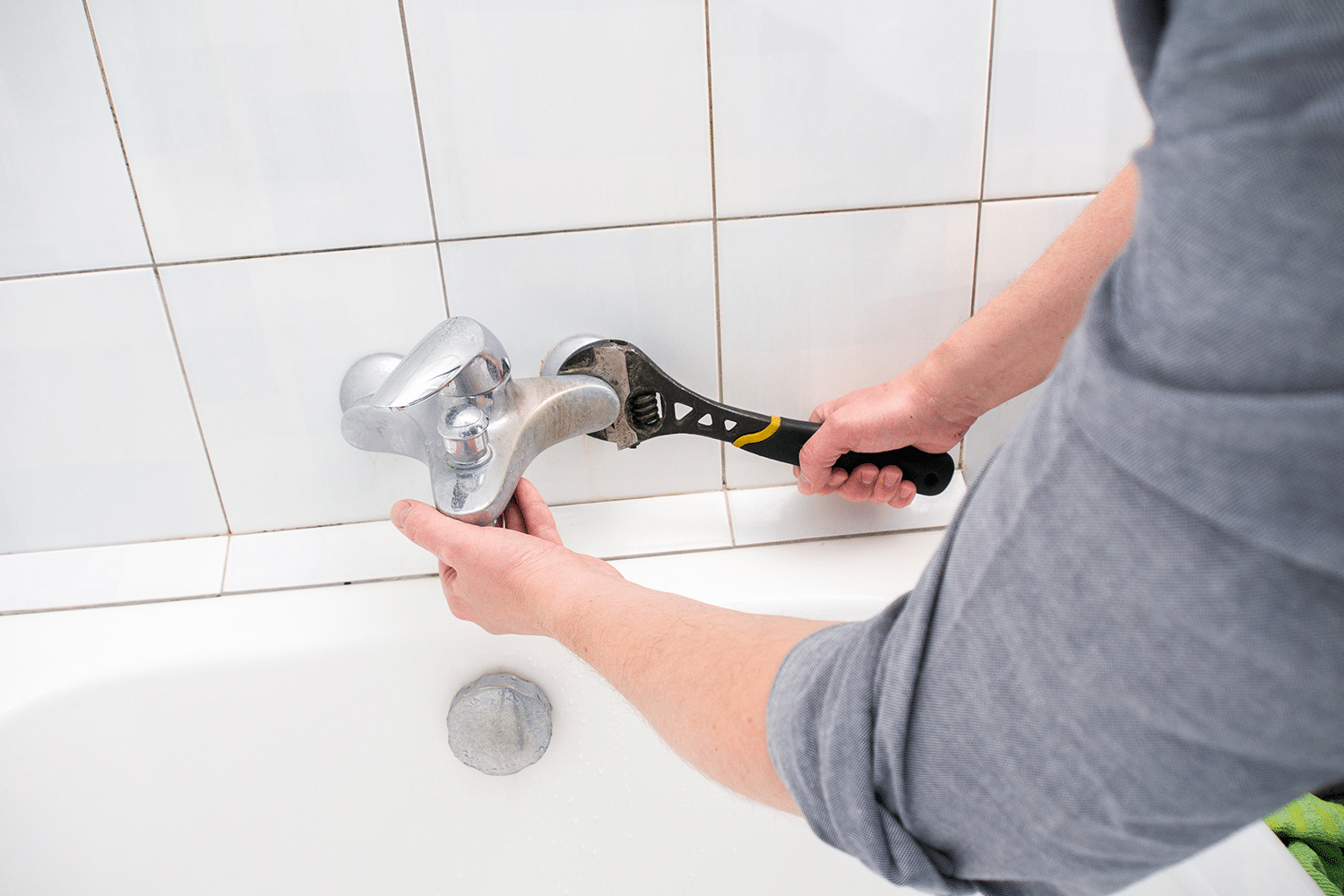What It's Needed to Fix a Faulty Faucet
What It's Needed to Fix a Faulty Faucet
Blog Article
What're your thoughts on What Causes Leaky Faucets & How To Fix Them?

Dripping taps may appear like a minor inconvenience, however their influence exceeds simply the annoyance of the audio. From drainage to sustaining unnecessary financial prices and wellness risks, overlooking a leaking tap can result in numerous consequences. In this short article, we'll look into why it's important to resolve this common household problem without delay and efficiently.
Wastefulness of Water
Ecological Influence
Trickling taps add substantially to water wastefulness. According to the Epa (EPA), a single faucet trickling at one drip per secondly can lose more than 3,000 gallons of water annually. This not just stress water sources but additionally influences environments and wild animals depending on them.
Financial Costs
Boosted Water Costs
Past the environmental effect, trickling taps can pump up water bills considerably. The collected wastage over time converts right into greater energy costs, which can have been prevented with timely repairs.
Prospective Residential Or Commercial Property Damages
Additionally, prolonged leaking can cause damage to fixtures and surface areas surrounding the tap. Water accumulation can cause discoloration, rust, and also structural problems if left ignored, leading to additional repair costs.
Health and wellness Issues
Mold and Mold Growth
The constant visibility of moisture from a dripping faucet produces an optimal environment for mold and mildew development. These fungi not just compromise interior air quality however also posture wellness risks, especially for people with respiratory system problems or allergies.
Waterborne Illness
Stationary water in leaking taps can come to be a breeding place for germs and various other microorganisms, boosting the threat of waterborne illness. Pollutants such as Legionella bacteria flourish in stationary water, possibly leading to major illnesses when ingested or breathed in.
DIY vs. Professional Repair
Advantages and disadvantages of DIY Fixing
While some may attempt to repair a trickling tap themselves, DIY repair services come with their very own collection of challenges. Without correct expertise and devices, do it yourself attempts can intensify the problem or result in incomplete repairs, prolonging the issue.
Advantages of Working With a Professional Plumber
Working with an expert plumber ensures that the underlying cause of the trickling faucet is resolved efficiently. Plumbing technicians have the expertise and equipment to diagnose and repair faucet problems successfully, conserving time and decreasing the threat of further damage.
Step-by-Step Overview to Repairing a Dripping Faucet
Tools Called for
Before trying to fix a trickling faucet, collect the necessary devices, including a flexible wrench, screwdrivers, replacement parts (such as washing machines or cartridges), and plumber's tape.
Common Tap Issues and Their Solutions
Recognize the kind of faucet and the particular problem causing the drip. Typical problems include damaged washers, rusty valve seats, or malfunctioning O-rings. Describe maker directions or on the internet tutorials for detailed support on repair services.
Preventive Measures
Regular Maintenance Tips
To stop trickling faucets, carry out regular upkeep such as cleaning up aerators, checking for leaks, and changing worn-out parts quickly. In addition, think about setting up water-saving tools or updating to much more reliable fixtures.
Importance of Prompt Repairs
Addressing leaking taps as quickly as they're noticed protects against further water waste and prospective damages, ultimately conserving both water and money in the long run.
Influence On Building Value
Assumption of Well-Maintained Property
Keeping a property in good condition, consisting of attending to maintenance concerns like leaking taps, improves its regarded worth and charm among potential customers or lessees.
Impact on Resale Value
Qualities with well-kept plumbing components, consisting of faucets, command higher resale worths in the real estate market. Attending to trickling taps can contribute to a favorable impression during residential property evaluations and arrangements.
Ecological Obligation
Private Contribution to Conservation
Taking responsibility for fixing dripping faucets straightens with wider efforts towards water conservation and environmental sustainability. Every person's actions jointly make a significant influence on maintaining priceless resources.
Lasting Living Practices
By prioritizing timely repairs and embracing water-saving habits, people contribute to lasting living techniques that benefit both existing and future generations.
Conclusion
Addressing a dripping tap surpasses plain ease; it's an important step towards conserving water, reducing economic expenses, and protecting health and residential or commercial property. Whether through do it yourself repair services or professional aid, taking action to deal with leaking taps is a small yet impactful method to advertise responsible stewardship of resources and add to a much healthier, much more lasting future.
How to Fix a Leaky Faucet: Step-by-Step Repair Guide
A leaky faucet may seem like a simple annoyance, but if it's not fixed promptly, that leak could cost hundreds to potentially thousands. From water damage to mold, mildew, and high water bills, even a tiny leak can be catastrophic if left unattended. Damage like this can even affect the overall value of your home, so it's important to take the right approach for leaky faucet repair. You may need the help of a plumber in some cases, but we've got a few tips you can try on how to fix a leaky faucet before calling the pros.
Four Faucet Types
When you're learning how to fix a leaky faucet, the first step is knowing what kind of faucet you're working with! There are four common types.
Cartridge Faucets
Cartridge faucets come in one- or two-handled varieties. In one-handled cartridge faucets, hot and cold water combines in a single cartridge. In the two-handled versions, hot and cold water are controlled separately and mixed in the faucet.
Ball Faucets
Ball faucets have a single lever you push up and down to adjust the pressure and rotate to change the temperature. A slotted metal ball controls the amount of water allowed into the spout.
Compression Washer Faucets
They're the oldest type of faucet, but they're still used in many homes — especially older ones. Compression faucets have two separate handles that, when turned, raise or lower the washer that seals a water valve. This valve stops water from flowing through the faucet when it is turned off.
Disc Faucets
Disc faucets rarely need to be repaired due to their maintenance-free design. The water flow is controlled by two discs — the upper one raises and lowers against a fixed lower disc, creating a watertight seal. If your disc faucet starts leaking, you may need to replace the seals or clean residue buildup from the inlets.
Fixing a Leaky Faucet
Step 1: Turn Off the Water
Whether you're learning how to fix a leaky bathtub faucet or how to fix a leaky kitchen faucet, always turn off the water supply to your working area when you're fixing a leak. The last thing you want is a flood added to your list of things to fix.
Look for the shutoff valves below your sink or around the tub and turn them clockwise to stop the water flow. If your faucet doesn't have shutoff valves, you may need to turn off the water for the whole house. Check to make sure it's off by turning the faucet on. If nothing comes out, you're ready to start the repair.
Step 2: Take Apart the Faucet
How you disassemble your faucet depends on the type of fixture you have. You can use a flathead screwdriver to remove the caps on top of the handle or handles for cartridge and compression faucets. Inside, you should see handle screws. Unscrew these with a screwdriver to remove the handle.
Disc- and ball-style faucets will typically have an inlet screw near the handle, and removing that will reveal the interior of the faucet.
Detach the Valve Stem
For cartridge- and compression-style faucets, you'll see the inner valve stem or cartridge once you remove the faucet handles. If you have a compression faucet, unscrew the brass valve stem. If you have a cartridge faucet, pull out the cartridge. If your cartridge has been in place for a while, it may require some tools or extra force to remove it due to mineral deposits.
Examine and Replace Parts
Once you've removed the parts, check them out to confirm what needs to be replaced. You may see corroded rubber washers, O-rings, stems, or cartridges. On a ball-style faucet, check the seats and springs for damage.
If you need to repair a leaky disc faucet, check the inlet and seals on the lower disc.
Once you determine what parts must be replaced, visit your local hardware store. Bring the damaged parts with you to ensure you can purchase the correct components to replace them.
Clean Valves and Faucet Cavity
If you've removed a stem or cartridge, you may notice mineral buildup in the faucet's threads. Use white vinegar to clean the valve seat by soaking it for a few minutes, then scrub it away with a soft toothbrush and rinse with warm water. You can also clean the interior of the faucet in the same way.
Reassemble the Faucet
Once your faucet is cleaned and the required parts have been replaced, it's time to reassemble it. Put the pieces back together and slowly turn the water supply back on. Doing this slowly is crucial because too much initial water pressure can damage the new hardware you've just installed.
https://homewarranty.firstam.com/blog/how-to-fix-leaky-faucet

As an avid person who reads on Why It's Important to Fix Leaky Faucets, I assumed sharing that blog post was essential. Sharing is caring. Helping people is fun. I love reading our article about 4 Common Reasons for a Leaky Faucet.
Report this page